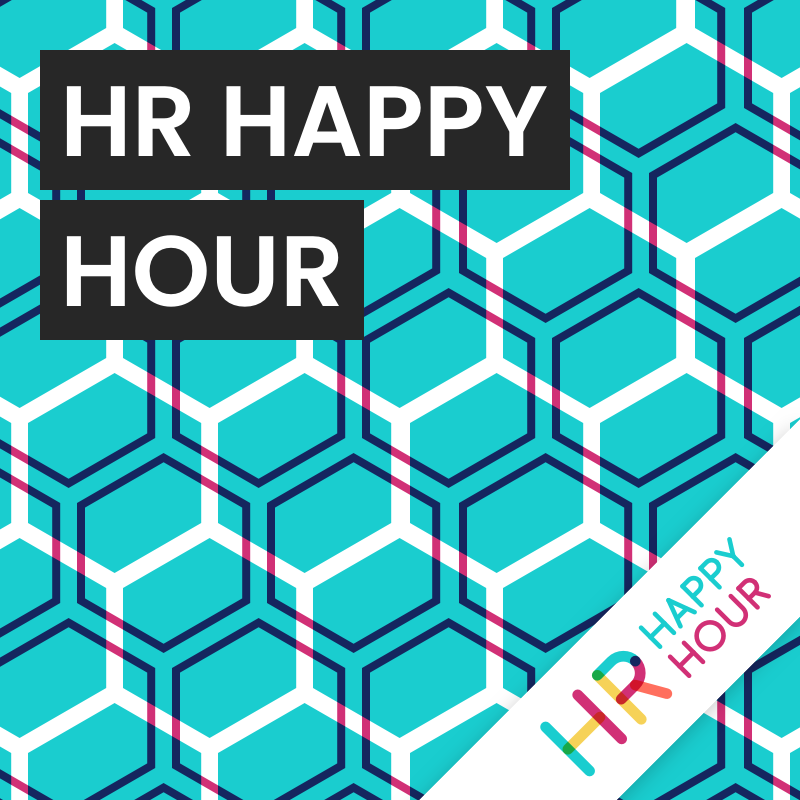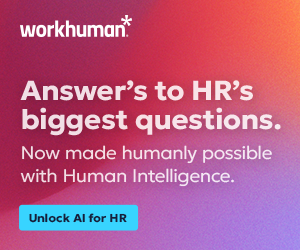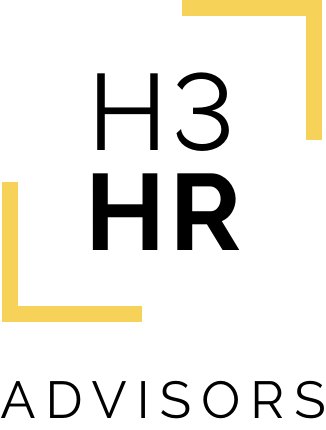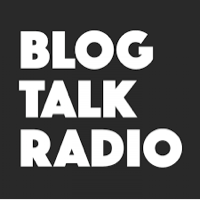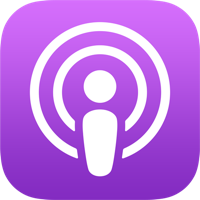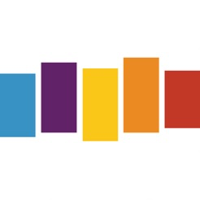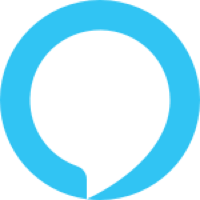HR Happy Hour 499 – Building the “X” in HXM
Hosted by

Trish Steed
Co- Founder and Chief Strategy Officer, H3 HR Advisors
About this episode
HR Happy Hour Episode 499 – Building the “X” in HXM – Live with SAP from the HR Technology Conference
Hosts: Trish Steed, George LaRocque
Guests: Meg Bear, Chief Product Officer and Amy Wilson, SVP of Products and Design
Sponsored by: SAP SuccessFactors
This week, we spoke with Meg Bear and Amy Wilson about Human Experience Management (HXM), and their vision and strategy behind it.
– The move from HCM to HXM
– The philosophy behind HXM and the importance of employee experience
– How to create opportunities for new skills training
– SAP’s acquisition of SwoopTalent
Focusing on employee experience gives your organization a competitive edge. SAP SuccessFactors designs and builds each solution with that in mind. They created and launched Human Experience Management (HXM) to put people at the center of business strategy and operations. SAP SuccessFactors develops employees by listening to them in real time. It serves up development opportunities and mentoring by looking at programs from a bottom-up perspective.
This employee-first approach goes a long way in our new world of work. It provides opportunities for employees to feel cared about and supported. SAP SuccessFactors changes the way organizations think about work by focusing on the “X” in HXM and moments that matter. These highly personalized moments affect the employee experience significantly throughout the organization and throughout the employee lifecycle. Evolving this strategy allows your organization to create purpose with your employees. It gives them the tools to do their best work.
Thank you Meg and Amy, for joining the show today! Remember to subscribe to the HR Happy Hour wherever you get your podcasts.
Transcript follows:
Trish 0:25
Hello, welcome to the HR Happy Hour. We are here live at the HR Technology Conference and I am excited to have a new co-host back on the show, Mr. George LaRocque. George, welcome.
George LaRocque 0:38
Well, thanks for having me. I’m excited to be here.
Trish 0:40
You know, we are on episode 499. And I believe you just participated on my behalf on 498.
George LaRocque 0:48
That’s right.
Trish 0:49
You did a preview show for HR Tech.
George LaRocque 0:52
We did and I’m expecting to be back for 500. No, can I?
Trish 0:56
You can absolutely come back for 500. We’re going to be doing that later on today, actually. 500 episodes. So yeah, it was really exciting to have the opportunity to be here live and do this in front of all these lovely people. We’ve not been here for two years. Right? So I mean, how is it? How’s it been for you, George, with pandemic? Now we’re back. I mean, are you feeling like this is what you were ready for? Does it feel really awkward and odd? I mean, how are you feeling?
George LaRocque 1:23
I feel good. I was concerned on the way out, but I really appreciated the Clear app and the vaccination requirement. And I feel like the venue and LRP, the organizers, you know, the HR Tech show folks have done a good job. And so I feel really good. It’s been a productive show. And I’m hearing lots of good things.
Trish 1:43
Well, wonderful. Well, we have two very special guests who are on the show who are actually as we can find out longtime listeners and also guests as well. Both have been guests on before. We are sponsored today by SAP SuccessFactors. And we are joined by Meg Bear, who is the Chief Product Officer. Hello, welcome.
Meg Bear 2:05
So excited to be back here both at HR Tech and on the HR Happy Hour.
Trish 2:10
I know, and in person person, right?
Meg Bear 2:12
Can you believe it?
Trish 2:13
I actually, I can’t. I was like on pins and needles a little bit like is this really going to you know, is it going to happen? Because with Delta variant and some other things so…
Meg Bear 2:21
Should I tell your radio listeners that you’re a brunette now or is that supposed to be a secret?
Trish 2:26
You could, I went a little incognito for HR Tech this year. Yeah, normally a blonde and yeah, thank you. And we’re also joined with Amy Wilson, who is the SVP of Products and Design. And Amy, can you maybe tell us just a little bit about it. You’ve had a history with us as well. You’ve been a guest before, been with SAP for a long time sharing with us.
Amy Wilson 2:48
I have, yes. Well I’ve been a longtime listener ever since my days at prior vendors, right? Even when HR Happy Hour first got started, that’s when you and Steve launched it. And what did we decide it was 2009?
Trish 3:06
He launched it in 2009. And I wasn’t even a host yet, and here we are. Steve is obviously busy with other things within the conference right at the very moment. But no, he’s done a great job of just coming up with the idea was actually started, for anyone in the audience who might not be familiar with us, he was a professor at Rochester Institute of Technology, and used this as a platform to teach his students about how to get involved in learning about HR technologies. So that was kind of the impetus. Actually, it was back in 2008. He bought it online for everyone in 2009. And so from there, we’ve really just spent time with HR professionals, HR leaders and vendors and other analysts as well. So it’s been really fun, kind of growing the show over the years.
Meg Bear 3:49
So back in the early days of the blog community in the HR tech space, I know I think has cemented some amazing friendships for all of us.
Trish 3:58
It has you know, and you brought something out too. So I joined officially as a host in 2013. In the beginning of the year before that was guest host once in a while or even a guest. You actually tweeted something, can you maybe share with the listeners what you tweeted for us yesterday?
Meg Bear 4:13
So I don’t actually remember when I acquired it, but the very first HR Happy Hour show swag, were very low budget white t-shirts with the logo with the martini glass. That was quite lovely. And I happen to have taken mine a few years later to family camp and tie-dyed it so I had a photo of it for record mostly because I was so impressed with my tie-dye job, but now I realize I really should have held on to it as an eBay.
Trish 4:44
It might have gone for a lot of money now.
Meg Bear 4:46
I think it would have.
Trish 4:47
It probably is worth a lot. You might be the only one that still has one.
Meg Bear 4:50
Could be worth $1.99! Now I’m not sure, but I suspect it might be.
Trish 4:56
Good deal. Well listen, in all seriousness, thank you both for coming on. I know we have a lot to cover today in a short amount of time. So why don’t we start by talking about there’s so much going on with both of you on your team and what you’ve been doing around HXM and your your vision and the strategy behind that. So, Me, why don’t we start with you if you could maybe tell everyone a little bit about HXM. I know it’s been out for, is it coming on year two? Right? Yes, this fall, kind of for anyone who might not be familiar what that what that is and what the philosophy is behind HXM?
Meg Bear 5:29
Yeah. So first off, HXM for us is so exciting. So in 2019, Ms. Wilson here, announced to the world that the future was all about employee experience. And so today, we all know this to be true. But at the time, this was a really big statement. And what we meant by that at SuccessFactors was not that we didn’t believe HCM was still important. Of course, all of us really understand that the core products within HCM suite are very important and strategic to all of business in the world. But, it’s really not sufficient for what the future requires. And what the future really requires, from my point of view is a position where individuals are honored and part of what it takes to make business work. And so when we launched HXM, our value prop was putting people at the center of business. And here we are two years later, and we have done a ton of things on the product side, we’ve seen great momentum in industry. And we’re super excited, because again, the point for us is the purpose, the purpose that individuals power business, and that we want to bring human back to human resources. So yeah, good stuff.
Trish 6:48
Thank you. Amy, can you maybe add to that, because I know it was two years ago at SuccessConnect where I first saw you on stage, really talking about that? Can you maybe talk about just sort of how that’s evolved, even with your clients? Because now you know, then it was more just a theory, it was new. Now you’ve had two years of people experiencing and living through HXM and that approach? How’s that working?
Amy Wilson 7:11
You bet, Trish. So when we thought about where the future was going, we thought first about the past, right. And if we think as HR professionals, those of us who were around a couple of decades ago, we’ll remember that move from HRM to HCM, when we move from people were liabilities that had to be managed to people are assets that that we should, you know, care about, right from a cost from a revenue more of a top line perspective, right. And so that was a huge thing a couple decades ago. But if you think about where the world is, and how important people are to business, right now, and going forward, to think about people as assets as equivalent to a fancy computer or a desk chair, that is really under serving people. So when we first came out with HSM, it was really about that, right? Really rethinking existing processes to be much more bottoms up, rather than top down. Even things that we had introduced at at success factors, for example, like continuous performance management, and development and mentoring and that sort of thing.
Amy Wilson 8:29
All of those things were still coming at us from a top down HR driven perspective, right, there are still strategic programs being thrust on people. And so as we are re imagining our solution in the context of HXM, we’re really thinking about what enables people to be more efficient, to feel supported, to feel inspired to feel confident, and what drives their own opportunity, just like Meg said, so it’s very much about data driving those experiences for the individual first, and not so much coming at it from a top down perspective. And now so that was our kind of our first, our first foray. And as we continue to move forward, we thought a lot about what does that X mean, right? Because that’s the important letter, right? Human, obviously, very important management, maybe less important, but that X, that’s the big, that’s the big letter. So how do we define the X. And so this is where we started to shift and think about moments that matter. which had become kind of this big term a couple of years ago, right? Shifting away from engagement surveys once a year to moments that matter. But again, those moments that matter are still top down. They’re still programmatic, it’s still HR’s view. But if we think about it from the individual, we need to think about it as moments that matter to me, right. And moments that matter to me are very individual. They differ from person to person. And they can be quite surprising. And they don’t necessarily jive with what HR thinks is important. But if we can understand what matters to each individual, and what’s going to help them react, to change, to take opportunities to upskill themselves to do their best work, then we can really do so much more from an organizational perspective. So that’s just, you know, just one kind of example of where we’ve continued to evolve the strategy since the original.
George LaRocque 10:41
I love hearing all of this and what’s not lost on me is the the context in which we’re having this conversation. So I mean, I’m known these days for tracking a lot of the innovation investment coming into the space. And you know, what really strikes me is that in 2019, as a, you know, a market leading vendor, a large vendor, with a large customer base, making the move to HXM, and making the move to experience and bottoms up, moments that matter is innovation in a way that moves the market, it moves, you’ve got a vast customer base across several market segments, small, medium, large. And by taking your product and your strategy in that direction, you’re actually helping move the market in that direction, you know, you’re not alone. Experience is something that the industry has been focused on. But to make that shift in 2019, it’s not just that startup pavilion and for those listening, you know, it’s not just the the little garage based startups that have new ideas. And what you’re doing is moving the market forward. So
Meg Bear 11:53
It’s not just something on the periphery, right? It’s not an add on, what we’re talking about is a wholesale change in terms of the way that you think about the technology, the way you think about the software and the solutions, and ultimately, the experience that you’re serving up here people wholesale, and then think that we take quite seriously the responsibility we have as a market leader to help move this forward. Because at the end of the day, it’s where do we want to work? Right? What work environment do we want to see. And that’s the legacy that all of us in this industry should care about. And so we think that there’s a lot of space, we’re glad that other people are following us into this space. But again, the core value is to make the human side, really empowered to make a big change and a big difference, because we see the power of people in the individual as being something that can be transformational to all kinds of business. And any of us that have lived through the last couple years recognize that if there’s one thing that’s clear is that change is going to keep coming at us. And if we think we can predict all the things we’re going to need, that’s just humorous. And so what we need to start doing is setting ourselves up. So that change can happen in a way that is not disruptive to the individual, but is actually empowering to them, so that they can be part of that future, and that they can feel connected and supported and cared about and that they can also feel engaged and empowered to make big things happen both for themselves and for business.
Trish 13:35
Yeah, I think it’s interesting when you’re talking about sort of that level of engagement and bringing people together. And you’re of course meaning, within your organization being powered at the people level, right, instead of top down, as you’ve been talking about. But I think one of the other things that I found fascinating when you launched HXM, you also have the community to go along with it. Can you maybe talk a little bit about that, because I think that’s, you know, having been in that HR seat years ago, it was like, that was always the struggle. You didn’t even if you had innovation, it wasn’t at scale. Even if you got it, you didn’t necessarily had other people who were sort of going through those same issues and problems. And now you’ve not only sort of created the solution for it, but you have a community of people that have been brought together can you maybe tell us a little bit about that?
Meg Bear 14:22
Yeah, so you’re getting to a really important point because we’re at an interesting inflection point with technology as well, where we can start to think in terms of open open ecosystems and adaptive solutions that aren’t just one vendor that can be empowered and supported across. And so when we think about ecosystem and what it SAP, we like to talk about it as our intelligent enterprise. We need to think in terms of, again, bringing those opportunities to individuals in a way that doesn’t just require a single vendor but also can be adapted and extended across. And so from our point of view, the great exploration of expanding the data understanding and expanding that core, but creating opportunity that has extensibility across, that gives you a chance to do something you could never do before, both as an HR practitioner to do things more rapidly and more innovatively, but also to quit doing these ideas of like, I put something in, and it solves a problem, and then I forget about it, and then I put something else in and it solves a problem and I forget about it.
Meg Bear 15:35
We need to think in terms of making these investments additive, so that when you invest in people, you get the compounding value of the growth of the people. So that’s how we’re looking at it. So when we talk about data, and when we talk about our opportunity marketplace in our innovation, it’s really about this concept, that we see an obligation as a platform vendor of choice to make these these value propositions expansive, and open. And, you know, additive for both the organization and for the individual. Because at the end of the day, it’s not just about their time with you. It’s about like this impacts our lives, the jobs that you do impacts your lives. And so when you grow as an individual and can do more, that helps your company, but you should you take that with you. And so again, very individualized.
George LaRocque 16:27
So how does that play out for the employee to bring it down to like a real use case, kind of conversation with that the data from this intelligent enterprise, moving in both directions? How would they experience that?
Amy Wilson 16:44
Well, so I’ll answer that, but then also I wanted to invoke one of the words that Trish had said earlier, which is a community, right? So when we first came out with this, people asked, well, is this just an idea right now what you know, and at the time, in the fall of 2019, the economy was going crazy. There was war for talent, etc. and then six months later, we were in a deep dive economy and every, you know, everything came to a halt. Right? And then it’s gone up and down. And now we’re who knows what’s happening? Like, I don’t know what’s happening outside right now we’re inside in Las Vegas. So who knows what’s happening outside? Right? But, but the reality is that we had a community that came together that have this shared experience, right, and that shared experience had so much to do with what was going on with humans. And, it started with, well, let’s understand how people are feeling let’s understand, you know, what we can do better, based on, you know, stress and burnout. But the other thing that is happening, that is a shared community thing is this great restlessness, this great reshuffle that’s happening within within our employee ranks right now. And so what we believe with regards to HXM and the data story that Meg just shared, by understanding who people are, by bringing in more bottoms up opportunities, whether it’s learning or mentoring, or assignments and gigs, dynamic teams, and being able to surface those opportunities to individuals within the organization, people can actually kind of write their own life, right, and they don’t have to take a huge leap and say, You know what, I’m going to go from this career to this other complete career, but I’m going to try on something for size. And, and this happened within our own walls at SAP, right. So during the pandemic, we had, you know, a shortage of consulting opportunities. You know, during, during the early days, a lot of organizations shut down their implementations, and we had a lot of consultants sitting on the bench, but we have this fabulous fellowship program within within SAP that allowed those consultants to instead of, you know, sitting and waiting for a billable assignment to be able to come in and be a product manager for six months, and some of those fellowships turned into full time work. And some of them went back and started up their billable work again, once once things picked up. So we’re seeing that kind of stuff happen in all sorts of different industries, all sorts of different places where they need to quickly redeploy and this allows both the business to thrive to be able to move people to where They’re needed, as well as for individuals to when they’re restless, and you know, they’re not, they’re not getting skilled for them to try on something to learn some new skills, and to get ready for something else.
Meg Bear 20:16
This also gets deeply to this concept of gathering skills. You know, we’ve been sort of stuck, I believe, in the last decade or so thinking that skills acquisition is exclusively the the purview of learning, and you take a training class, and all of a sudden you have skills. And I don’t know about you guys, but that’s actually not how I learn, I do take a training, and I do a lot of reading, and I love having outside instruction, but, but that’s how I get ideas. That’s not how I actually learned skills, how I learned skills is by trying it, doing it failing, finding somebody that can help me and trying again. And so I really believe that when we think about this construct of restlessness and redeployment, and then we also think about the construct of gap and, and the need for individuals to have different skills for the organization, there’s a real opportunity in here for individuals to pair up with other people to learn from them to try and to and to have experiences that are not all or nothing that we’ve had in the past, you either take this job, which let’s be honest, are not going to give you because you don’t have the skills for the job. And so that’s the job you want, but you can’t do it right. But most people will allow you to come to work for them for free and and gather those skills as part of that. So, really enabling that and making that more democratized creates a space for development in a way that is, to my mind much more readily accessible, and actually much more sustainable, because you will know that you’ve actually attained those skills, because you will have done it. And not only will you have done the work and have the certificate, because you may have done some training. But you actually have people that say, Yes, I worked with you and you didn’t suck at this. So maybe you could do more of it. Right? So these are things that I think we do, but we don’t do it formally. And this is a place where HR can support individuals taking their own careers in their own hands. And I think that’s really where the power is gonna be.
Trish 22:18
I agree. You know, one of the great things, when you’re thinking about just all we’ve accomplished even in just the last two years, and I feel like Amy to your point and Meg to yours, I mean, it feels like in a pandemic, when we’re all faced with such different ways of working, it’s the things that you were all talking about before it ever happened are now really playing out in a way where you can see if it makes an impact or not. I do feel like you guys really are visionaries, and not just within your own organization. I mean, you all have been in this industry a long time and you both been considered visionaries in this one thing I want to make sure we get a chance to touch on especially because we have George with us who’s also such an industry leader when it comes to talking about acquisitions and changes in the marketplace. You all recently announced an acquisition of SwoopTalent. So George, I might turn it to you actually, I’m sure you have some questions around that acquisition and just overall perspective on the marketplaces with regard to that.
George LaRocque 23:17
I do, and I think it’s a great time to talk about them, given what the conversation is, and I’ve been like, okay, I don’t want to rush in and start asking about Swoop yet. But, you’re talking about data across the enterprise, you’re talking about bringing these different elements together. And that’s what Swoop’s AI does. So,you know, the big question we could talk about the deal, but how did it come together? Was it you had the need and you found Swoop or Swoop presented itself and you knew you had that you know, what, how did it transpire?
Amy Wilson 23:56
So, a little of all of the above. We have been fans of Stacy and Satish the founders of Swoop for a long time. We had worked together in the past and know each other just like we know a lot of of you in this industry and admire smart people doing interesting things. So we’ve always been deeply connected. But as we started looking at our vision for our opportunity marketplace and our whole self model, we recognized that we wanted to create something that did not have a past experience within any of the vendors and any of our own teams. And so we were looking for a couple things. We were definitely looking for specific expertise in this the types of data that that we were that that were envisioning, but we were also looking for, you know, that energy that you get with startups right where like, let’s go do something that’s never been done before. etc. And so as we and we did look at quite a few different things, and what’s interesting, and I think everybody here knows, we are in kind of like adolescence when it comes to AI and HR technology, right? Like, but I’m not sharing anything we don’t understand about ourselves, right?
Amy Wilson 25:17
We are getting some value, but it’s kind of awkward, and it’s a little bit in recruiting. And you know, it’s not really clear how people buy it. And it’s not really clear how it provides value. And so, because of that, when we were looking at the different types of things we could do, there was nothing that was going to be exactly the fit that we were looking for. But one of the things that Swoop had that was so powerful, was this sort of deep understanding. They’d worked with customers for several years really getting deep on what were the machine algorithms that were important, and how was the data constructed, and not just as a single point in time data, but really, as a machine learning adaptive thing, because we know that whatever we’re going to figure out day one with data is going to be very different a year from now, two years from now, five years from now. So what we need more than anything is for that to be wildly adaptive in a way that we haven’t used before. And so they were already there.
Meg Bear 26:21
And to add to that, they were solving real life, super large customer problems, right? Not just one little tiny thing. But they were going into a customer’s entire data landscape around people. And there could be hundreds of different data sources, and figuring out how to put together a breathing living profile about the individual, as well as then what the organizational needs were right, and the job needs. And this this is, this is really special stuff. Because typically, you know, what we see in in the startup world is it’s, you know, it’s solving one small problem. And it’s a bit theoretical, right? And it’s starting small, and you don’t know, right? You don’t know if it’s really going to stick, you don’t know if it’s going to really solve the big tough problems. But with throught, we 100% knew that they had done that, that they knew what they were doing, and then they were doing it in a scrappy, you know, really get the customer value right away. And so that really appealed to us.
George LaRocque 27:39
Well, they were taking briefings from you, you definitely scored on the energy side, you mentioned energy with those two founders.
Trish 27:45
They haven’t changed.
George LaRocque 27:47
But that’s, as a startup, you know, there for everyone in this room and listening, they might be like a best kept secret. But not because, you know, they were, in a lab, they had their sleeves rolled up. And when you would take a briefing, it was about the problem to your point, the problem they were solving, and how they were delivering for some big customers. When we talk about acquisitions, a lot of times the conversation I have is about, okay, you’ve got these two companies coming together, what’s going to happen to the customer base, but this is different, because these are components. So can you talk a little bit about, you know, how this AI and these components and learning models will be leveraged within SAP SuccessFactors?
Amy Wilson 28:34
Yeah, absolutely. So we lightly touched on the whole self model earlier. So the idea is that what people are made up of includes skills, and it includes experiences and expertise. But it also includes other things like mindsets and strengths and personality traits and other expressive attributes. And all of those components together really make up the whole self, the whole person. And so starting with skills, we need to have a way to infer those skills to be able to find those out in a living breathing way. We need to be able to express those skills in different ways. We need to be able to connect those skills then to the various opportunities and so on. And then if you start to think about taking those skills and and looking at different data items, like those strengths, like those mindsets, etc. what swoope has done is they’ve built a data model and a set of algorithms that’s very agnostic to the sources to the data elements themselves. It’s basically packages and these little component parts, I like to call them fuel bars, but I’m still selling Stacey on that. So she said she’s never really been much of an athlete. So she doesn’t, you know, get into the power bar, but, I think it’s like these little packages of fuel. And it doesn’t matter what it is. But it’s things that people need, they need to have skills, they need to have experiences, they need to have strength state, they need to have passions, etc, all of these things that are necessary for people to thrive in the workplace. And they change constantly. And the needs of the organization change constantly. And each organization is different, and each person is different. So being able to have just this very agnostic, data model, data modeling, and these algorithms and these sources of fueling all of that is really how we’re how we’re approaching this, right, because otherwise, if we didn’t have soup, it would be you know, we’d be doing some cool stuff, but it would be the same old it would be the same old static data model that you know, where we’re, we’ve got a skills and technology or whatever, and we’re doing some matching, but it’s, you know, it requires updates from the individual that requires, you know, some significant data model changes by the, by the company, but this, this lives and breathes.
Trish 31:16
I like too that you’re you’re sort of taking, you’re such a reputable product, and solution in the industry. You’re constantly innovating, as we’ve talked about with with HXM and all of the other things you’re doing sort of internally, you’re looking externally to bring in these innovative ideas and idea makers and builders, right? So I feel like it’s kind of the perfect storm right, you’re at that position right now where you’re meeting everyone’s needs at all these different levels. But you can also scale it very easy. So you know, we are out of time, but I want to thank you both Amy and Meg for coming on the show. We love that you’re here for the number 499
Meg Bear 31:57
499! Where’s the t-shirt, Trish?
Trish 32:00
Right, we already talked about this offline, we absolutely have to get new swag for you all and if you tie-dye it again, you can just maybe model it for next year for sure. But I want to thank everyone for coming here. We do have a live audience. Thank you all for taking your time today to come and join us. Thank you to everyone who listens in on the show. And thank you to my co-host George LaRocque for joining me and helping the conversation along.
George LaRocque 32:24
How would I not? To come talk to these two innovators who know what’s happening, it’s a treat.
Trish 32:30
It is especially since it’s been so long since we’re in person so I don’t want that to get lost on anyone. But this is actually really special and we couldn’t think of anyone we wanted to talk to you more in terms of having in-person contact. So, thank you both. Please keep us updated and we will share all of the links in the show notes to everything we’ve talked about today. We’ll have some press release information and for anyone whether you’re listening to this as a replay or whether you’re here in person, please go check out their booth. And then also if you’re on the replay, we will put in all the information links. So thank you, everyone.
Meg Bear 33:05
Thank you.
Amy Wilson 33:06
Thank you so much.
Transcribed by https://otter.ai
Talk to us
If you want to know more about any aspect of HR Happy Hour Media Network, or if you want to find out more about a show topic, then get in touch.

